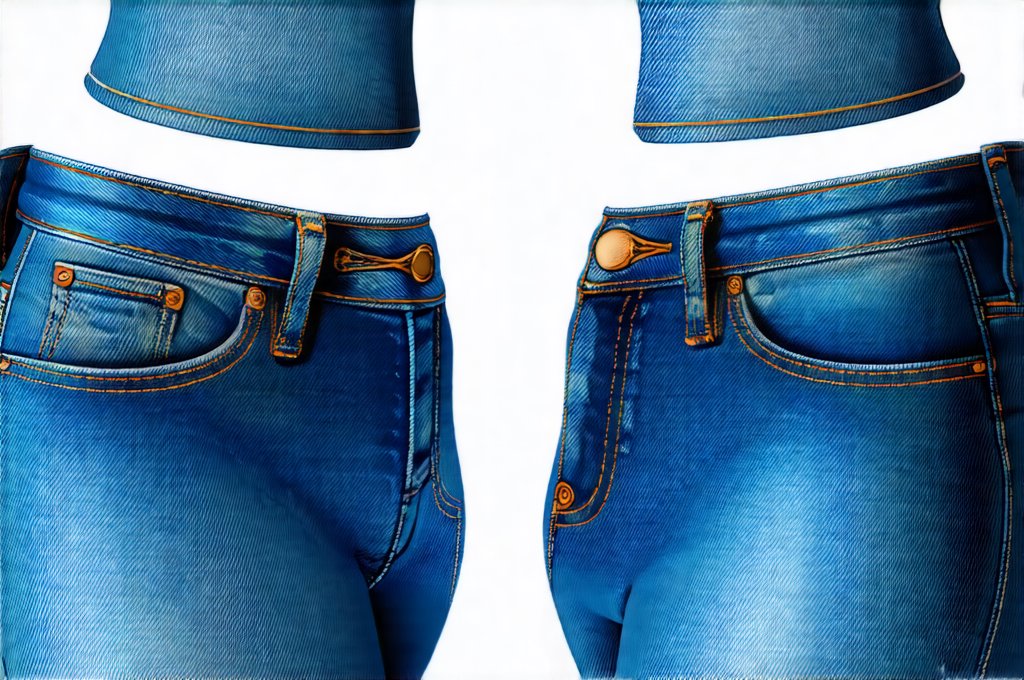The discomfort is familiar to many: a nagging ache after a long day, a frequent urge to “just go,” and sometimes, an unsettling feeling that something isn’t quite right. For women specifically, these symptoms often trigger immediate concern – could it be a urinary tract infection (UTI)? While UTIs are common, the culprit can sometimes be more subtle, or at least seem less obvious. In recent years, there’s been growing discussion around whether everyday fashion choices, like wearing tight jeans, might contribute to urinary issues, including symptoms that mimic cystitis (inflammation of the bladder). This is a topic fraught with anecdotal evidence and evolving understanding, leading many women to question their wardrobes and daily habits.
The connection between clothing and urinary health isn’t entirely new; for decades, healthcare professionals have advised avoiding tight-fitting garments in certain situations, particularly when dealing with yeast infections or other conditions that thrive in warm, moist environments. However, the specific link to cystitis symptoms – frequency, urgency, discomfort – is more complex and nuanced. It’s not about a direct cause-and-effect relationship so much as understanding how constricted clothing can potentially create an environment conducive to bacterial imbalance and irritation within the pelvic region. This article will explore the potential links between tight jeans and these symptoms, focusing on what current knowledge suggests and providing practical considerations for maintaining urinary health.
The Mechanics: How Tight Jeans Might Contribute to Symptoms
The primary concern isn’t that tight jeans themselves cause cystitis directly. Cystitis is typically caused by bacterial infection (most often E. coli), inflammation, or other underlying medical conditions. Rather, the issue lies in how constricted clothing can influence the surrounding environment and potentially exacerbate existing vulnerabilities. Tight-fitting jeans, particularly those made from non-breathable fabrics, can trap moisture and heat against the skin, creating a microclimate that’s favorable for bacterial growth. This is especially true in the perineal area – the space between the anus and the genitals.
Furthermore, tight clothing restricts airflow. Proper ventilation helps maintain a healthy balance of flora within the urinary tract and vaginal region. When airflow is limited, it can disrupt this natural ecosystem, potentially leading to an overgrowth of harmful bacteria or fungal organisms. This imbalance isn’t always enough to trigger full-blown cystitis but can create a state of persistent irritation and inflammation that mimics the symptoms. It’s important to note that individual susceptibility plays a huge role; some individuals are more prone to these effects than others, depending on their anatomy, hygiene practices, and overall health status. If underlying anxiety is also contributing to your discomfort, consider learning more about can anxiety cause cystitis symptoms.
Finally, tight jeans can put pressure on the bladder and urethra. While this is less directly linked to causing cystitis, it can certainly contribute to feelings of urgency and frequency even in the absence of inflammation. The constant compression can essentially heighten sensitivity and make individuals more aware of normal bladder function, leading to a perception of problems where none exist.
Beyond Jeans: Other Contributing Factors & Lifestyle Considerations
It’s crucial to avoid placing all the blame on tight jeans. Numerous other factors can contribute to cystitis symptoms or increase susceptibility to urinary tract issues. These include things like inadequate hydration, poor hygiene practices (wiping back-to-front after using the toilet), sexual activity (which can introduce bacteria into the urethra), hormonal changes during menstruation or menopause, and underlying medical conditions such as diabetes or a weakened immune system.
Lifestyle choices also play a significant role. A diet high in processed foods, sugar, and caffeine can irritate the bladder and exacerbate symptoms. Conversely, staying well-hydrated by drinking plenty of water helps flush out bacteria and maintain healthy urinary function. Regular exercise promotes overall health and strengthens the pelvic floor muscles, which support the bladder and urethra. Stress management is also important because chronic stress can weaken the immune system and make individuals more vulnerable to infections. Therefore, addressing these broader lifestyle factors is often as crucial – or even more so – than simply modifying your wardrobe. Considering a potential dietary link, you might ask: can a sudden change cause UTI symptoms?
Understanding the Symptoms & When to Seek Medical Attention
Accurately identifying symptoms is key to differentiating between a genuine cystitis infection and irritation caused by clothing or other factors. Common symptoms of cystitis include: – A burning sensation during urination – Frequent urge to urinate, even when little urine comes out – Cloudy or strong-smelling urine – Pelvic discomfort or pressure – In severe cases, blood in the urine
However, many of these symptoms can also be present with irritation caused by tight clothing. The key difference often lies in the severity and persistence of the symptoms. Irritation from clothing typically presents as milder discomfort that improves when changing clothes or loosening restrictions. A true cystitis infection usually involves more intense pain and may be accompanied by fever, chills, or back pain – indicating a potential kidney infection.
It’s essential to consult a healthcare professional if you experience any of the following: – Symptoms persist for more than a few days – You have a fever or chills – You notice blood in your urine – You experience back pain or flank pain – Your symptoms are severe and interfere with daily activities Self-treating can delay proper diagnosis and treatment, potentially leading to complications. Additionally, be aware that vaginal dryness cause urinary symptoms as well.
Proactive Steps for Urinary Health & Wardrobe Choices
While there’s no definitive proof that tight jeans cause cystitis, taking proactive steps to minimize potential risks is a sensible approach. Here are some practical tips: – Prioritize Breathable Fabrics: Opt for jeans made from cotton or linen blends rather than synthetic materials like polyester or spandex. These fabrics allow for better airflow and reduce moisture buildup. – Choose Looser Fits: Even if you love the look of skinny jeans, consider alternating them with looser-fitting styles on a regular basis. Give your body – and your bladder – breathing room. – Change Clothes Promptly: If you’ve been sweating or engaging in physical activity, change out of damp clothes as soon as possible. This helps prevent bacterial growth. – Practice Good Hygiene: Wipe from front to back after using the toilet, and wash regularly with gentle, unscented soap. Avoid harsh soaps or douches that can disrupt the natural balance of flora. – Stay Hydrated: Drink plenty of water throughout the day to flush out toxins and maintain healthy urinary function. – Support Pelvic Floor Health: Incorporate pelvic floor exercises (Kegels) into your routine to strengthen the muscles that support the bladder and urethra.
The Importance of Individualized Care & Professional Guidance
Ultimately, managing urinary health is a personalized process. What works for one individual may not work for another. If you’re concerned about cystitis symptoms or suspect that your clothing choices might be contributing to the problem, seeking professional guidance from a healthcare provider is crucial. They can conduct a thorough evaluation, rule out underlying medical conditions, and recommend tailored strategies based on your specific needs and circumstances. Don’t hesitate to discuss your concerns openly with them – it’s the best way to ensure you receive appropriate care and support. Remember that taking proactive steps towards urinary health isn’t about sacrificing style; it’s about finding a balance between fashion, comfort, and well-being.





















